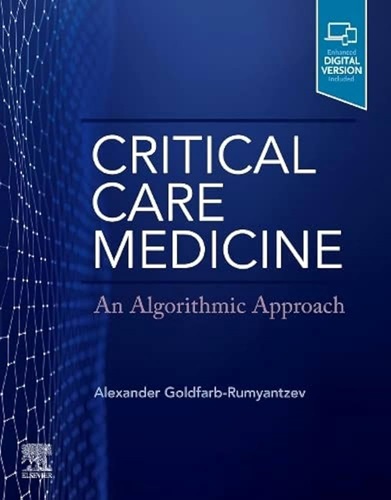体外膜氧合过程中的止血变化:一项比较三种不同体外膜氧合系统的前瞻性随机临床试验
IF 7.7
1区 医学
Q1 CRITICAL CARE MEDICINE
引用次数: 73
摘要
目的:体外膜氧合是抢救重症肺衰竭患者的一种方法。体外膜氧合引起的主要并发症是出血、血栓形成和溶血。本研究的目的是比较不同体外膜氧合系统对成人静脉-静脉体外膜氧合治疗中止血的影响。设计:单中心前瞻性随机研究。地点:德国雷根斯堡大学医院。患者:需要静脉-静脉体外膜氧合治疗的严重急性呼吸窘迫综合征成年患者。干预措施:没有。测量和主要结果:三种不同的体外膜氧合系统:心脏辅助系统(Maquet Cardiopulmonary AG), Dideco ECC。比较了O5 (Sorin Group)和带有Hilite 7000 LT + DP3泵头(Medos Medizintechnik AG)的Deltastream系统。因此监测止血、抗凝、溶血和炎症参数。在纳入研究的54例患者中,各有18例患者被随机分配到三种不同的体外膜氧合系统。排除标准为急性肾功能衰竭、外伤和2天内手术。静脉-静脉体外膜氧合支持的中位时间为13.5天(4-70 d),血小板计数中位数从体外膜氧合治疗前的220.5 G/L下降到体外膜氧合支持最后一天的最低133 G/L。在体外膜氧合治疗的前5天,凝血酶原片段1.2 (F1.2)(1.36-2.4µM)、凝血酶-抗凝血酶复合物(14.5-50µg/L)和d -二聚体(6.00-27.0 mg/L)增加,而纤维蛋白原值从5.8 g/L下降到4.1 g/L。在体外膜氧合治疗的前5天内,三种不同的体外膜氧合系统在止血、抗凝、溶血和炎症参数方面没有任何差异。结论:随着时间的推移,小型化静脉-静脉体外膜氧合治疗越来越多地激活凝血。不同类型的膜氧合器和泵对止血无明显影响。本文章由计算机程序翻译,如有差异,请以英文原文为准。
Hemostatic Changes During Extracorporeal Membrane Oxygenation: A Prospective Randomized Clinical Trial Comparing Three Different Extracorporeal Membrane Oxygenation Systems
Objective:Extracorporeal membrane oxygenation is a rescue therapy for patients with severe lung failure. Major complications caused by extracorporeal membrane oxygenation are bleeding, thrombosis, and hemolysis. The aim of this study was to compare the impact of different extracorporeal membrane oxygenation systems on blood hemostasis in adults during veno-venous extracorporeal membrane oxygenation therapy. Design:Single center prospective randomized study. Setting:University Hospital Regensburg, Germany. Patients:Adult patients with severe acute respiratory distress syndrome requiring veno-venous extracorporeal membrane oxygenation therapy. Interventions:None. Measurements and Main Results:Three different extracorporeal membrane oxygenation systems: the Cardiohelp system (Maquet Cardiopulmonary AG), the Dideco ECC.O5 (Sorin Group), and the Deltastream system with Hilite 7000 LT + DP3 pumphead (Medos Medizintechnik AG) were compared. Therefore hemostasis, anticoagulation, hemolysis, and inflammatory parameters were monitored. Of the 54 patients included in the study, 18 patients each were randomly assigned to the three different extracorporeal membrane oxygenation systems. Exclusion criteria were acute renal failure, trauma, and surgery within 2 days. The median time on veno-venous extracorporeal membrane oxygenation support was 13.5 days (4–70 d). Median platelet count had dropped from 220.5 G/L before extracorporeal membrane oxygenation therapy to a minimum of 133 G/L by the last day of extracorporeal membrane oxygenation support. During the first 5 days of extracorporeal membrane oxygenation therapy, prothrombin fragment 1.2 (F1.2) (1.36–2.4 µM), thrombin-antithrombin complex (14.5–50 µg/L), and D-dimers (6.00–27.0 mg/L) increased, whereas fibrinogen values dropped from 5.8 to 4.1 g/L. The three different extracorporeal membrane oxygenation systems did not show any differences with regard to hemostasis, anticoagulation, hemolysis, and inflammatory parameters within the first 5 days of extracorporeal membrane oxygenation therapy. Conclusions:Over time, miniaturized veno-venous extracorporeal membrane oxygenation therapy increasingly activates coagulation. The different types of membrane oxygenators and pumps did not significantly alter hemostasis.
求助全文
通过发布文献求助,成功后即可免费获取论文全文。
去求助
来源期刊

Critical Care Medicine
医学-危重病医学
CiteScore
16.30
自引率
5.70%
发文量
728
审稿时长
2 months
期刊介绍:
Critical Care Medicine is the premier peer-reviewed, scientific publication in critical care medicine. Directed to those specialists who treat patients in the ICU and CCU, including chest physicians, surgeons, pediatricians, pharmacists/pharmacologists, anesthesiologists, critical care nurses, and other healthcare professionals, Critical Care Medicine covers all aspects of acute and emergency care for the critically ill or injured patient.
Each issue presents critical care practitioners with clinical breakthroughs that lead to better patient care, the latest news on promising research, and advances in equipment and techniques.
 求助内容:
求助内容: 应助结果提醒方式:
应助结果提醒方式:


